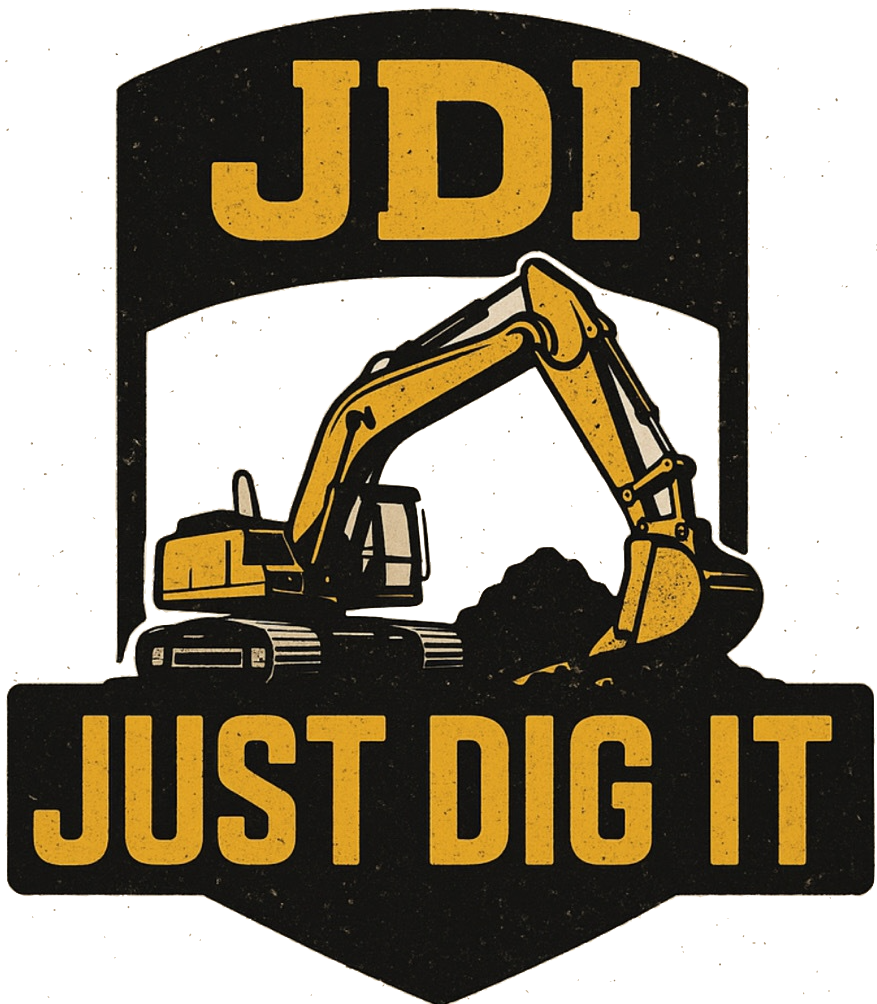Flatwork Prep 101: Get Your Site Ready for a Perfect Pour
If you’re pouring a driveway, patio, shop slab, or sidewalk, the success of that concrete starts with what’s underneath it. Proper flatwork prep isn’t just about making the ground level—it’s about creating a compacted, stable, and graded surface that will support the concrete for years to come.
At Just Dig It, we’ve prepped hundreds of concrete jobs across Utah. We’ve seen what works, what doesn’t, and what happens when this crucial step is rushed or skipped altogether.
In this guide, we’ll walk you through everything you need to know about flatwork prep—from excavation and subgrade to compaction and cleanup—so your concrete pour goes off without a hitch.
Why Flatwork Prep Matters So Much
Concrete is only as strong as the base it sits on. Without a proper subgrade, even the best concrete can:
- Crack due to settling or movement
- Shift due to poor compaction or moisture
- Develop uneven surfaces or drainage problems
Good prep ensures your flatwork stays level, drains correctly, and holds up under foot traffic, vehicles, or structures. It also makes life easier for your concrete crew—saving time, materials, and frustration.
What Is “Flatwork” in Construction?
Flatwork refers to any horizontal concrete surface, including:
- Driveways
- Sidewalks
- Patios
- Garage floors
- Shop or shed pads
- Walkways or utility slabs
Each of these needs a compact, level base to avoid cracking, sinking, or premature wear.
Step-by-Step Flatwork Prep Process
Step 1 – Site Evaluation
We walk the site and review the scope of the pour:
- What are the dimensions?
- What kind of concrete use is expected (foot traffic, cars, machinery)?
- Are there slope or drainage concerns?
- What’s the condition of the existing soil?
This helps determine how much excavation, fill, or grading is needed.
Step 2 – Excavation to Proper Depth
We remove any sod, soft topsoil, debris, or previous surface materials. Then we dig to the required depth—typically 4–8 inches below finish grade, depending on the concrete thickness and use case.
For high-load areas (like driveways or garages), deeper excavation may be needed to allow for gravel base and thicker concrete.
Step 3 – Grading and Shaping
Once excavated, we use skid steers, grading blades, and hand tools to:
- Create a smooth, even subgrade
- Ensure proper slope for drainage (usually 1–2% away from buildings)
- Shape edges and transitions for formwork
At this stage, we check elevations against string lines or laser levels to confirm accuracy.
Step 4 – Base Material (If Needed)
Some projects require imported base material, especially if:
- Native soil is soft or loose
- You need better drainage
- Your engineer or GC has called for it
We install and level gravel or road base, then compact it thoroughly using plate compactors or rollers.
Step 5 – Compaction Testing & Final Touches
Before the concrete crew arrives, we double-check:
- Surface is solid and compact
- Grade matches the pour plan
- No soft spots or dips remain
- Trenches (if needed) are cut for thickened edges or utilities
This prep ensures the slab goes in without unexpected delays or adjustments.
Tips for a Smooth Concrete Pour
1. Confirm Elevation and Drainage Slopes
Water should run away from the house, garage, or structure—never toward it.
2. Leave Access for Trucks and Tools
Your concrete team will need a clear path for the mixer, forms, and finish tools.
3. Coordinate With Your Concrete Contractor
If you’re not the one pouring, connect us with the flatwork crew. We’ll confirm their specs so everything lines up on pour day.
4. Don’t Skip the Compaction
Loose or uneven subgrades cause cracks and callbacks—something nobody wants.
Common Mistakes to Avoid
We’ve fixed plenty of jobs that were poorly prepped. Here are mistakes to avoid:
- Skipping excavation over old material or sod
- Assuming it’s “flat enough” without checking slopes
- Underestimating traffic loads and using weak base material
- Failing to compact layers properly
- Letting weather conditions delay compaction or drainage
Getting it right the first time saves thousands in rework and repair.
Real-World Flatwork Prep Examples
We’ve prepped sites for:
- Backyard patios with tricky access and soft topsoil
- Large shop pads where drainage had to be graded across a wide slope
- Driveways that required extra excavation to fix builder-grade subgrades
- Retaining wall footings that doubled as walkways
Each job is different—but the fundamentals stay the same: dig, level, compact, clean, and prep for a perfect pour.
Work With Just Dig It for Your Concrete Prep
We’ve fixed plenty of jobs that were poorly prepped. Here are mistakes to avoid:
- Skipping excavation over old material or sod
- Assuming it’s “flat enough” without checking slopes
- Underestimating traffic loads and using weak base material
- Failing to compact layers properly
- Letting weather conditions delay compaction or drainage
Getting it right the first time saves thousands in rework and repair.
Let’s Get Your Site Ready to Pour
If you’re planning a concrete pour, start with a solid foundation. Call (801) 793-5585 or click here to request an estimate, and let’s talk about prepping your site the right way.

